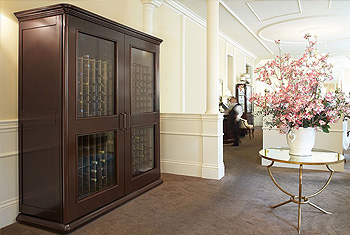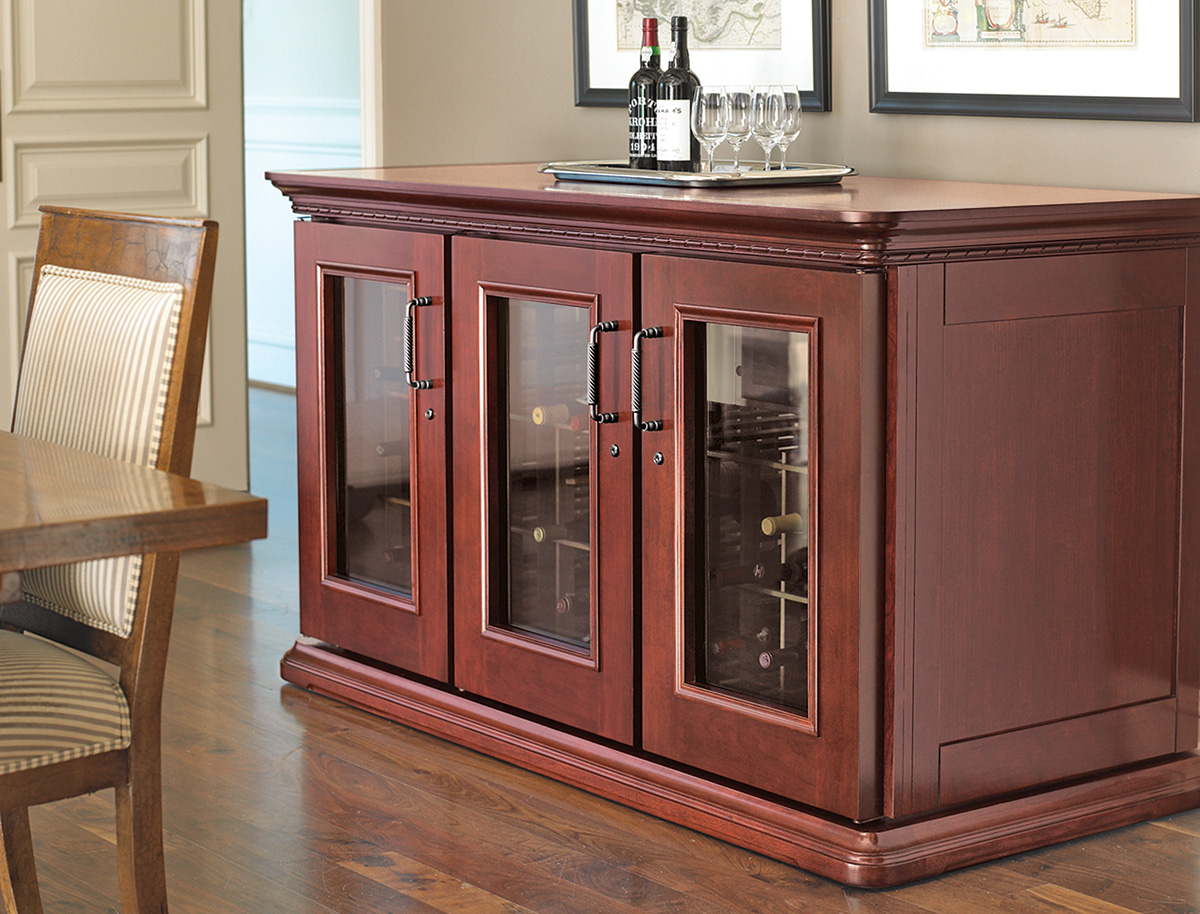
Wine cabinet cooling units come with several different types of venting configurations, each of which has an impact on where the wine cabinet can be placed.

Top-venting Cooling Units
These units exhaust hot air out of the top of the wine cabinet, and intake cold air in from the back of the cooling unit. This configuration requires that there be sufficient space above the wine cabinet so that the hot air can dissipate properly. Typically, three inches of space are recommended between the wine cabinet and the wall behind it, so that the cooling unit has enough space to draw cold air through the cold air intake.
Back-venting Cooling Units
Back-venting cooling units exhaust hot air out of the back of the wine cabinet, and also intake cold air in from the back of the cooling unit. This configuration requires that there be sufficient space behind the wine cabinet so that the hot air can dissipate properly. Typically, six inches of space are required between the wine cabinet and the wall behind it, so that the hot air exhaust doesn’t suffocate the cold air intake.
Manufacturer guidelines for wine cabinet placement are based on cooling unit configurations, and should be followed to ensure optimal long-term cooling unit performance.
Think about where you plan to install the wine cabinet before choosing which venting option is best for that space.